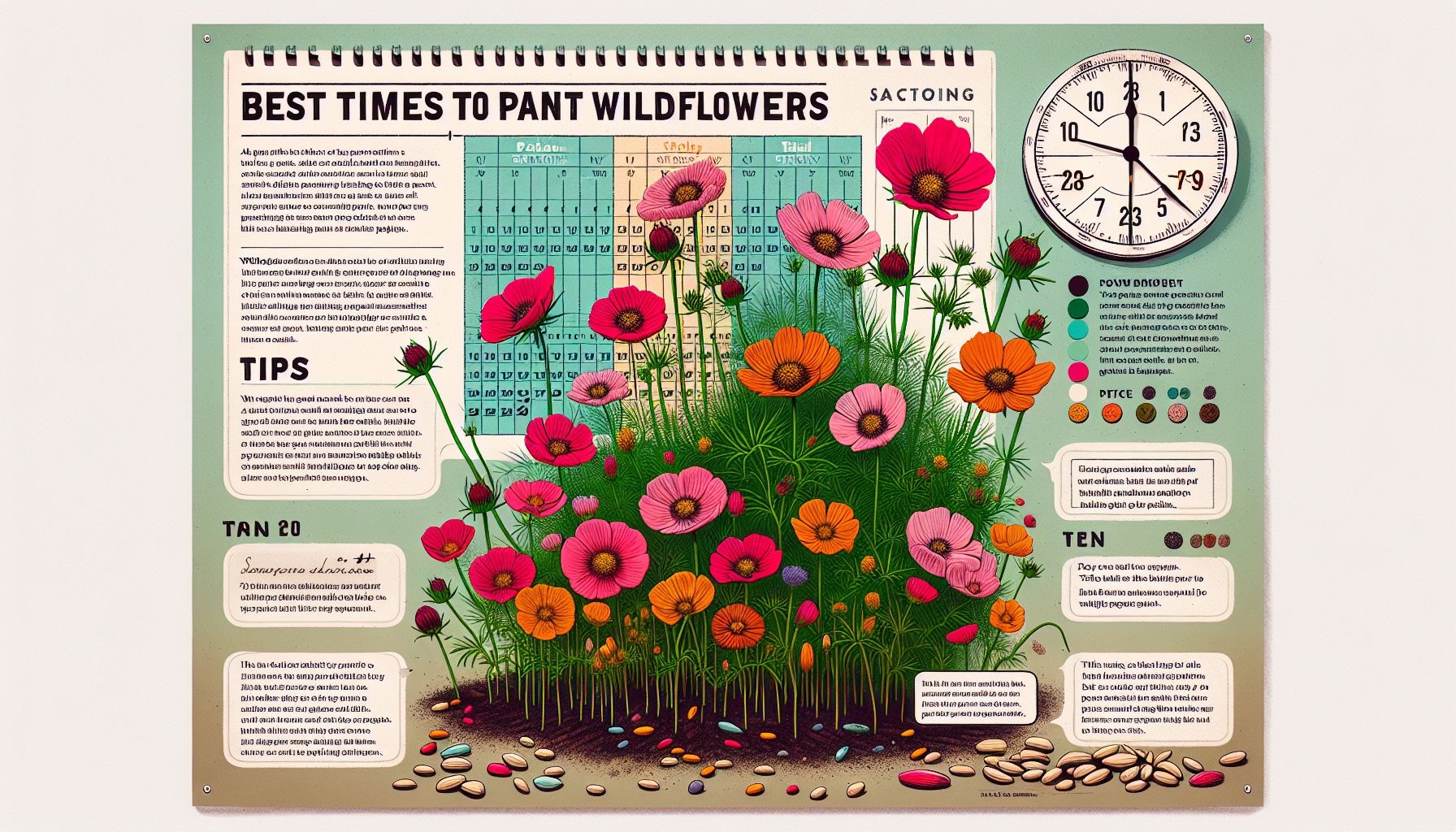
when to plant wildflower seeds
When to Plant Wildflower Seeds: A Seasonal Guide for Success
Wildflowers add a burst of color and life to any garden or landscape. Whether you're creating a pollinator-friendly garden or simply enjoying their natural beauty, knowing when to plant wildflower seeds is crucial for a successful bloom. In this guide, we’ll explore the best planting times for wildflower seeds and provide tips to ensure your flowers thrive.
Understanding Wildflower Growth Cycles
Wildflowers grow best when their seeds are planted at the right time of year, allowing them to germinate and establish themselves properly. Timing depends on your climate, soil conditions, and the specific type of wildflower you’re planting. Broadly, there are two main planting windows: fall and spring.
Planting Wildflower Seeds in Fall
Fall is an excellent time to plant wildflower seeds for those living in regions with mild winters. Planting in the fall allows seeds to go through a natural cold stratification process during winter. This process mimics what wildflowers experience in nature and helps break seed dormancy, leading to stronger germination in spring.
- Ideal Timing: Plant seeds after the first frost but before the ground freezes.
- Benefits: Fall planting ensures early spring blooms and requires less watering during germination.
- Preparation: Remove weeds, loosen the soil, and scatter the seeds evenly. Lightly press the seeds into the soil without burying them too deep.
Planting Wildflower Seeds in Spring
Spring planting is another popular option, especially in areas with harsh winters. As the soil warms, wildflower seeds can germinate and grow quickly. Spring planting is ideal for annual wildflowers, which grow and bloom within a single season.
- Ideal Timing: Plant seeds after the last frost when the soil temperature reaches at least 55°F (13°C).
- Benefits: You can enjoy a full season of blooms, especially if you stagger planting times.
- Preparation: Prepare the soil by removing debris, raking it smooth, and mixing seeds with sand for even distribution. Water regularly to keep the soil moist during germination.
Tips for Successful Wildflower Planting
Regardless of whether you plant in fall or spring, following these tips will increase your chances of growing a vibrant wildflower garden:
- Choose Native Species: Select wildflowers that are native to your region. They’re better adapted to local conditions and support pollinators.
- Test Your Soil: Conduct a soil test to ensure the pH and nutrients are optimal for wildflower growth.
- Water Wisely: Water the seeds gently and consistently during germination, but avoid overwatering to prevent rot.
- Be Patient: Wildflowers can take time to germinate. Some seeds may sprout within weeks, while others take months.
Conclusion
Planting wildflower seeds at the right time is key to creating a thriving and colorful garden. Whether you opt for fall planting to mimic nature’s cycles or spring planting for quick blooms, proper preparation and care will ensure your wildflowers flourish. Ready to get started? Check out this guide from the Lady Bird Johnson Wildflower Center for more information on wildflower species and planting advice.
Happy gardening!